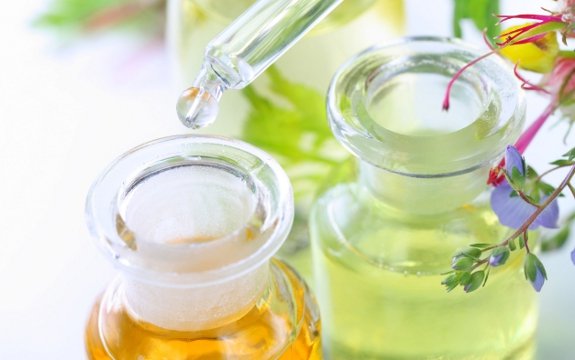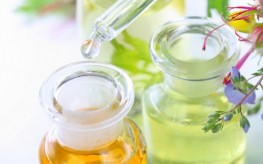Easily Make Your Own Herbal Tinctures and Save Money

 Herbs can be used as preventative tonics or healing medicinal remedies. Traditional healing disciplines used herbs exclusively, now western alternative medicine is undergoing a renascence with traditional herbalism. So it’s a good idea to learn not only about the herbs themselves, but also how to use them in various healing methods – such as herbal tinctures.
Herbs can be used as preventative tonics or healing medicinal remedies. Traditional healing disciplines used herbs exclusively, now western alternative medicine is undergoing a renascence with traditional herbalism. So it’s a good idea to learn not only about the herbs themselves, but also how to use them in various healing methods – such as herbal tinctures.
Some consider the bio-availability of herbs extracted in tinctures superior to teas and decoctions. Maybe so, maybe not. But one thing’s for sure, store bought tinctures are pricey. Even one ounce bottles go from ten to twenty U.S. dollars, depending on the herb type and quality.
But you can make your own large volume tinctures easily and cheaply for long term cost efficient use with high quality ingredients of your choice. Thanks to the alcohol content, a large batch can last forever without losing potency.
This way you can avoid supplement price increases and dodge the threat of minimizing herbal availability from the Medical Mafia and Big Brother. This is already occurring in Europe, Canada, and Australia under the expanding terms of Codex Alimentarius enforcement.
Here’s How to Make Your Own Tinctures
First, familiarize yourself with what herbs are suitable for any health conditions you wish to address. For example, black elderberry extract is an excellent flu remedy, better than Tamiflu and without the side effects and expense. Dandelion and milk thistle are excellent liver decongestants and tonics with prophylactic or preventative properties. As tonics, they could and should be taken constantly.
The herbs should be organic or wild crafted from pristine areas and not irradiated.
There are two basic approaches for making tinctures: One uses grain alcohol and distilled water, and the other uses 80 or 100 proof vodka. The proof content of alcoholic beverages measures around one-half the alcohol content by volume. Check out Elizabeth Renter’s previous post here at NaturalSociety for more information about herbal tinctures.
So 80 proof vodka is 40% alcohol with 60% water, which some consider adequate for most tinctures. Others prefer a 50/50 ratio of alcohol to water, which comes with 100 proof vodka.
Using grain alcohol lessens the alcohol cost and ensures a high quality of water if you purchase grain alcohol (ethyl alcohol) by the quart from a large liquor store and mix it 50/50 with distilled water. That’s the way I was taught, but you may find the 40% grain alcohol to distilled water appropriate for some tinctures.
Make sure you use very large jars; mason jars are good, bigger ones are better. Place the herbs of your choice to the one-third level of that empty jar. Than add either the vodka or the pre-mixed 50/50 or 40/60 ethyl (grain) alcohol and distilled water up to a bit below the top of the jar. This allows gently swooshing the mixture around to mix the solution.
What’s tricky is some herbs swell up with moisture more than others. So the “bit below” may be a couple inches or a few inches. This requires some research or queries with those who know the herb’s properties to avoid trial and error.
Both recipes involve a seasoning period of 15 to 30 days, an herbalist instructed me to use 30-days seasoning. The seasoning should occur in a dark space like a cupboard or closet with a daily gentle shake for a few seconds to mix the herbs more.
It’s wise to label the bottles with both the herb and the date the seasoning started. After the seasoning period with gentle, brief daily shaking, your tincture is ready.
Place the seasoned solution into a jar with the herbs filtered out or simply leave it as-is while removing one, two, or four ounces at a time into dark amber or blue glass bottles with glass droppers. The solutions should always be protected from sunlight.
A dose of one dropper-full will usually require two full draws to get that amount. It’s impossible to fill a dropper with one draw. Put the full amount into a small amount of water or place it under your tongue for a minute to acquire the herb’s effect from a sublingual approach.
Use hot water to evaporate some of the alcohol if you’re concerned about consuming it.
Voila! You just made your first herbal tincture – or you will soon!
Additional Sources:

Be careful to use only organic alcohols – vodka, gin, and processing alcohols ARE available in organic if you search- otherwise alcohols of all kinds- including those in store bought tinctures and cosmetics- are almost always made from corn, and we know what that means- toxic GMOs!!!
Some fine Russian vodkas are made from distilling wheat grains or potatoes. Here’s an interesting tip from elsewhere regarding pure grain alcohol –
“The glucoamylase is an enzyme used during initial fermentation.
Similarly, GMO corn – used as the base for fermentation – is early in
the process. Once a neutral grain spirit such as Everclear is ready for
market, the distillation and filtration ensures that you’re left with
nothing but 95% ethanol and 5% water. Any remnants of the GMO inputs are
left behind.
That said, Alchemical Solutions in Oregon is a
certified organic micro-distillery making neutral grain spirits with
non-GMO corn and non-GMO glucoamylase.”